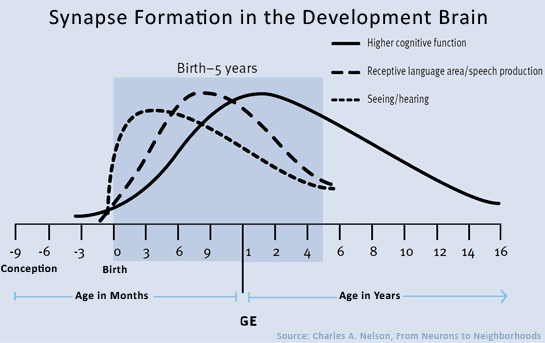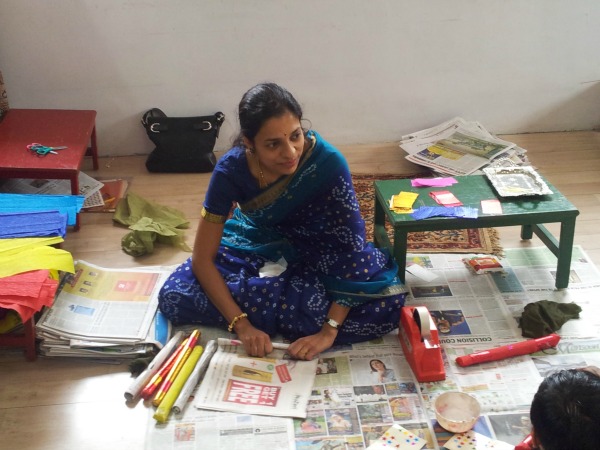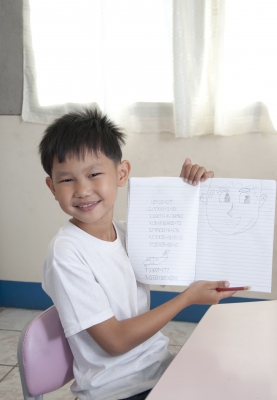As Indian parents, we value education- especially education that is focused and leads to a goal. Most of us have gone through traditional, focused education in India right from our high school days. We do not understand what a Liberal Arts education is about- it confounds us!
Simply speaking, it is a system of education that believes that the journey is as important as the destination. It believes in creating well rounded individuals with skills that will help them manoeuvre their way around this complex world- the emphasis is on life skills than knowledge per se. A Liberal Arts education encourages students to step outside their comfort zone and study diverse subjects in order to expose them to new thinking and ideas that they can ponder upon, analyse and draw conclusions from.
When you are getting a Liberal Arts education (usually at the undergraduate level), you study a variety of subjects, an eclectic mix, so to speak, which seemingly have nothing to do with each other, but which will help shape you into a well rounded individual. A Liberal Arts education helps you think, analyse and form your own conclusions about subjects as varied as literature, philosophy, psychology, theatre, math and even sciences.
Liberal Arts education is originally supposed to have evolved in Europe where it slowly died down over centuries. It has seen a revival in the United States with several Liberal Arts colleges and Universities specialising in a Liberal Arts education. Most colleges offer a full-time, four-year course of study that leads to a Bachelor of Arts or Bachelor of Science degree. The colleges that offer these programmes are almost always small- the student-teacher ratio is high, there is heavy student-teacher interaction in classrooms and the focus is on developing critical thinking skills which will help an individual make well-informed decisions as they move on to the workplace.
My daughter is in the US getting a Liberal Arts education at Tufts University. The University believes that the abilities to work in a team structure, verbally communicate with persons inside and outside an organisation, obtain and process information to make decisions and solve problems and most importantly the ability to plan, organise and prioritise work are what an employer looks for in an employee and that these abilities are embedded in a Liberal Arts education. To give you an idea, my daughter is doing International economics, Psychology, a writing seminar and an acting class in her first semester. She will work individually and in teams; she will study these subjects thoroughly, analyse and debate and write papers with which she can effectively communicate her ideas and thoughts; she will be exposed to information from diverse sources- she will learn to process all this information to form her own conclusions- she will do all this by planning and prioritising.
The students do just 15 hours of classroom study in a week- they are supposed to study 3 hours on their own for every hour of classroom study. The emphasis is on learning and discovery- the teachers are available to help them at every stage of their learning process. The students will eventually pick a major- my daughter is veering towards economics, international relations and/or journalism- she has time until the end of year two to decide; in the meantime, she will do an eclectic mix of subjects, some traditional, some new and learn wonderful and disturbing things about the world, which will prepare her to face the challenges when she sets foot into the workplace.
In these difficult times, one might think that a Liberal Arts education is a waste of time and money- when the going gets bad, one wants to revert back to the traditional. A parent might feel that a focused undergraduate degree might be of better help in the workplace.
As parents, we all look for a good ‘return on investment’. College education has become very expensive- especially an undergraduate education in the US. We would not want our children studying an eclectic mix of subjects that lead nowhere- while I was not such an advocate of a Liberal Arts education in the past, I am slowly understanding its value. I like the system which permits students to explore diverse options in the first two years and then veer towards something a little more focused in their final years of study so that they are not only well rounded as human beings but also equipped with the technical skills in their chosen area of study. This is precisely what a Liberal Arts education gives them and hopefully, it will be ample ‘return on investment’ as well.
It is perhaps time for colleges in India and Singapore to offer Liberal Arts programmes as part of their undergraduate degree programs. Singapore (a very focused and disciplined city-state) is getting its first Liberal Arts college in 2013- the NUS-Yale Liberal Arts college. It is a big step for Singapore: the policy makers and the prospective users (students and parents) are hoping it will be a success.
And I am hoping my daughter’s Liberal Arts education in Tufts will prepare her to face the workplace not only in the US, but also anywhere else in the world where she might need to go.
Re-published with permission from the blog of ParentEdge, a bi-monthly parenting magazine that aims to expose parents to global trends in learning and partner with them in the intellectual enrichment of their children.


 If your older child is sleeping between you and dad as in the case of many Indian families, it becomes important to address the sleeping situation well before your due date arrives. This is important so that your older child does not feel displaced by the baby. So if you have plans to move your child to a different room, begin right away. If your older child must begin preschool, then ensure that it does not coincide with the arrival of the new baby. You certainly do not want your older child to associate being thrust in the care of someone else with his new sibling’s arrival.
If your older child is sleeping between you and dad as in the case of many Indian families, it becomes important to address the sleeping situation well before your due date arrives. This is important so that your older child does not feel displaced by the baby. So if you have plans to move your child to a different room, begin right away. If your older child must begin preschool, then ensure that it does not coincide with the arrival of the new baby. You certainly do not want your older child to associate being thrust in the care of someone else with his new sibling’s arrival. At this time, it is especially important to assure her that she can never be replaced and that the new baby is going to love her and look up to her more than anyone else. Assigning a protector kind of role to your older child is much better received than telling her that she is going to have someone to play with.
At this time, it is especially important to assure her that she can never be replaced and that the new baby is going to love her and look up to her more than anyone else. Assigning a protector kind of role to your older child is much better received than telling her that she is going to have someone to play with.
 Yesterday was the annual event at my daughter’s school “
Yesterday was the annual event at my daughter’s school “ The high school years (Grades 9 -12) are crucial as they, whether one likes it or not, largely determine the choices a student has in college and beyond. As such, all parents are concerned about how to help their children during this time.
The high school years (Grades 9 -12) are crucial as they, whether one likes it or not, largely determine the choices a student has in college and beyond. As such, all parents are concerned about how to help their children during this time. Everyone makes mistakes. Granted, some mistakes are more significant than others and harder to get over, but they are a part of life. How individuals deal with those mistakes is significant to their self-esteem. Children who are taught from an early age to admit to their mistakes understand that it’s not a crime to make one, and they seem to have the ability to cope much better with them. They recognize that a mistake was made and admit the error.
Everyone makes mistakes. Granted, some mistakes are more significant than others and harder to get over, but they are a part of life. How individuals deal with those mistakes is significant to their self-esteem. Children who are taught from an early age to admit to their mistakes understand that it’s not a crime to make one, and they seem to have the ability to cope much better with them. They recognize that a mistake was made and admit the error.